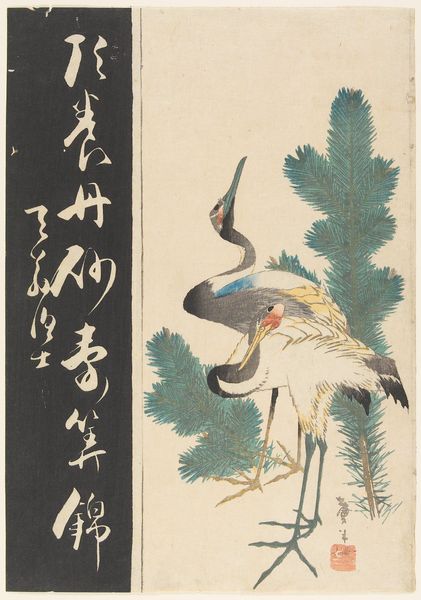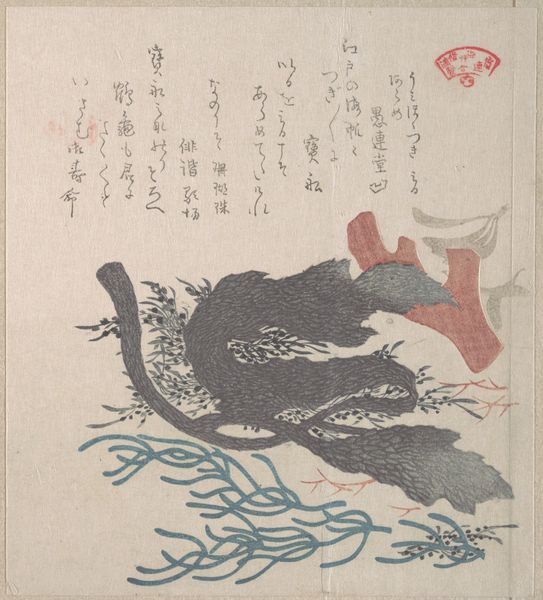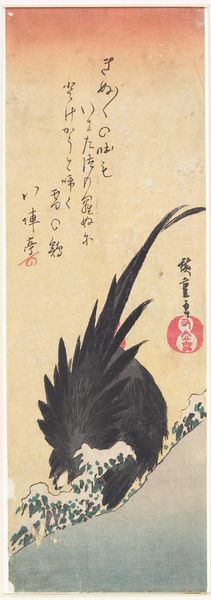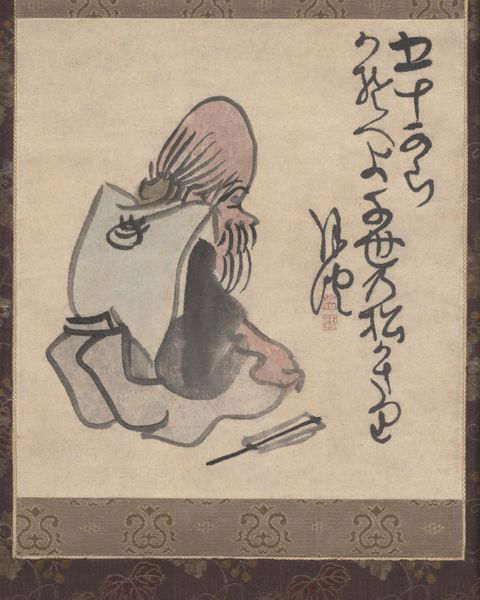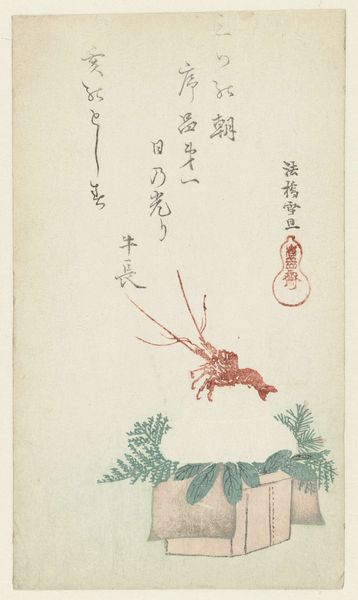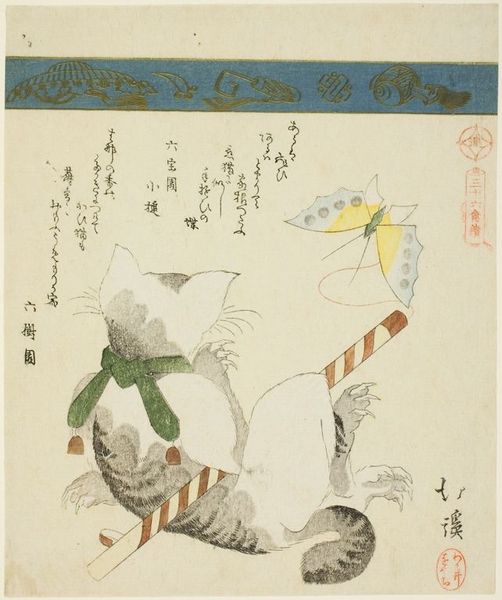
painting, print, ink, woodblock-print
#
portrait
#
water colours
#
painting
# print
#
asian-art
#
ukiyo-e
#
figuration
#
ink
#
woodblock-print
#
watercolor
Copyright: Public Domain
Editor: So, we're looking at "Young Woman and Gibbon" by Torii Kiyomitsu, from around the 18th century. It's a Japanese woodblock print, and I'm really struck by how delicate the lines are and the flat planes of color. What's fascinating to me is how the gibbon seems to be both a pet and almost a mirror image of the woman's pose. How do you interpret this work? Curator: What I find compelling is considering this piece in the context of ukiyo-e production. The seemingly effortless lines, the delicate colors... those are achieved through a collaborative process, often involving designers, block carvers, printers, and publishers. It was very intensive labor that often isn't acknowledged when we view the "fine art" outcome. How does understanding the means of production shift our perception of the woman's portrayal here? Is it just a celebration of beauty or is there a commodity relationship happening here, too? Editor: That’s a great point! I was focusing on the image itself, but thinking about all those hands involved... and the role of the publisher... it makes me wonder who this was *for*? Were these prints widely accessible, or were they aimed at a wealthier clientele? Curator: Exactly. The materiality of the print itself—the type of paper, the quality of the inks—these factors would have determined its cost and, therefore, its audience. These weren’t necessarily "cheap" reproductions, especially early on. Also, think about the gibbon. Its presence also speaks to privilege, an imported exotic animal is a kind of luxury object. The labor needed to acquire it and maintain it shifts the frame away from “beautiful woman” towards wealth and class. Editor: That's a fascinating connection – I hadn't considered the gibbon as a status symbol itself! I guess I was reading it more as a decorative element. Curator: Often easy to read as such, yet reading deeper helps see its economic underpinnings and related power dynamics. Editor: This has given me a whole new appreciation for the process behind these prints, and how closely linked the art is to the social context and economics of the time. I’ll definitely look at ukiyo-e differently now. Curator: Yes! Considering the material conditions of artistic production adds crucial depth. We shouldn't separate aesthetic enjoyment from social awareness.
Comments
No comments
Be the first to comment and join the conversation on the ultimate creative platform.
